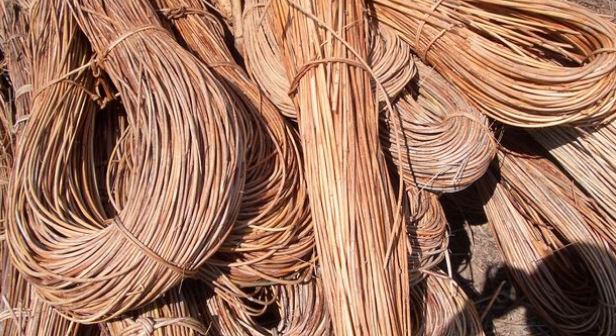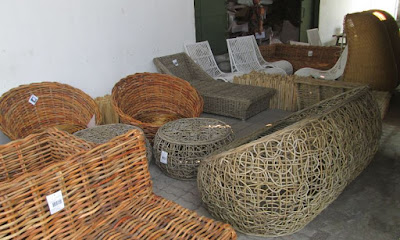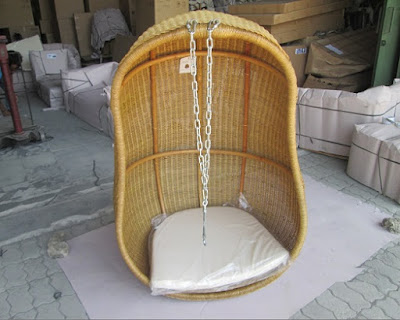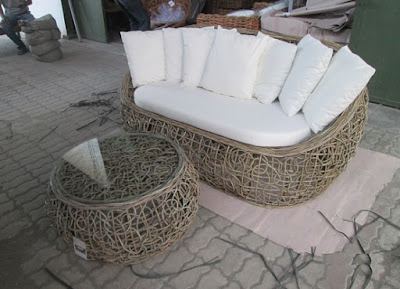How to Rattan Raw Material Processing
Rattan is one of Indonesia's biological resources, a
significant foreign exchange earner. As the largest rattan producing country,
Indonesia has contributed 80% of the world's rattan needs. According to the results of an inventory conducted by the
Directorate of Forestry Production Development, of 143 million hectares of
forest in Indonesia, it is estimated that forests covered with rattan cover
approximately 13.20 million hectares, which are spread across Sumatra,
Kalimantan, Sulawesi, Java and other islands that have forests natural.
In Indonesia there are eight rattan genera consisting of
approximately 306 species, only 51 species have been utilized. This means that
the use of rattan types is still low and is limited to species that have known
benefits and are sold in the market. It is estimated that more than 516 types
of rattan are found in Southeast Asia
Product Rattan
Product Rattan
Rattan is a plant that is used by humans to make
handicrafts, for example, various types of weaving, such as wicker chairs, food
hoods, and so on. After finish the harvest period from rattan there is a
process to convert it into rattan furniture. Not as easy as that we imagine
that is enough rattan is dried then cut and then woven and become a chair,
table and other products. Rattan factory
products require many stages to obtain high quality rattan raw materials
related to the durability of the furniture to be used. In addition, quality
rattan raw materials will certainly be more easily formed into furniture.
There are several stages that are mostly carried out by
factories processing rattan raw materials to eventually become furniture.
Stages begin with the sorting in which rattan will be selected which is of a
certain standard. This standard will be seen from the rattan that is deflated,
broken or damaged by pests such as rattan powder infestation. The sorting process is done manually so there are many
mistakes that often occur. Next is the cutting process.
This process is carried out to separate the stem rattan from semi poles rattan so that it can be used in accordance with its function. Cutting the rattan is done using a machine so that it is fast and of the same quality. Scrapping is a process that is carried out to peel the skin of the rattan stem so that it becomes semi-polished rattan. Whereas the polishing process is a sanding process which aims to obtain finer semi-polished rattan but the book segment is still visible. Making core and phytic is the next process when it will produce the type of fitrit and core rattan. Where the calculation is 1 rattan core can produce 4 rattan sections depending on the sharpness of the blade.
This process is carried out to separate the stem rattan from semi poles rattan so that it can be used in accordance with its function. Cutting the rattan is done using a machine so that it is fast and of the same quality. Scrapping is a process that is carried out to peel the skin of the rattan stem so that it becomes semi-polished rattan. Whereas the polishing process is a sanding process which aims to obtain finer semi-polished rattan but the book segment is still visible. Making core and phytic is the next process when it will produce the type of fitrit and core rattan. Where the calculation is 1 rattan core can produce 4 rattan sections depending on the sharpness of the blade.
Peel rattan is the next process to get peel rattan from
sega rattan. Every 1 sega rattan will produce 4 pcs peel rattan. The next stage
that is very important is preservation. This preservation process is carried
out to prevent and eradicate attacks from rattan-destroying insects.
To carry out this stage of preservation requires a special
drug that works to expel and prevent the emergence of rattan-damaging insects
such as powder beetles. This preservation stage also requires a longer time due
to the process of using materials and rattan drying so that it is ready to be
packed.
If it has been packaged according to the type of raw
material, rattan will be sent directly to the rattan processing industry into
furniture.
Product Rattan
Product Rattan
You May Also Like:
- How to use Acceptable Quality Level (AQL)
- Container Loading Check
- Carton Drop Test Check
- Electronics Inspection
- During Furniture Inspection
- During Hard-Lines Inspection
- Preshipment Inspection Furniture
- Furniture and Rattan Inspection
- How to Step use Moisture Content (MC)
- How to check Moisture Content (MC) wood
- Pre-Shipment Inspection Hardlines and Softlines






Belum ada Komentar untuk "How to Rattan Raw Material Processing "
Posting Komentar